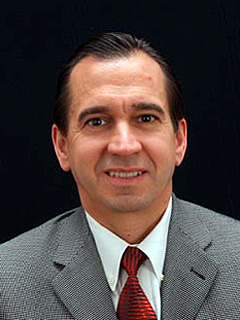Transforming the back office has taken on fresh urgency in the wake of COVID-19. Now that more employees work from home as well as the office, they need seamless access to a secure environment in both locations, and it needs to be as easy to use.
These expectations will push their companies to adopt cloud systems faster. But which systems? And how fast?
We say finance and HR should share top priority because they are interconnected, and employees rely on them. Employees need to process an invoice, approve a payment, or change a payroll whether or not they are physically located in an office.
As for how fast finance and HR systems should be adopted, we say as soon as possible, in one big bang, not sequentially. You get better value, better experience, and a better outcome.
Better value
It is patently less expensive to implement one cloud system with one provider—and the more systems you combine with one provider, the cheaper it will be per system. In nearly all cases, implementing Oracle Cloud with KPMG costs less than maintaining current on-premise technology—35 percent less, in fact. And in actual dollars, we’ve found that it’s $5 million less expensive to install ERP and HCM together.
It’s also less expensive to manage a single system after installation. Executives sometimes believe that two groups will share resources, but we haven’t seen that happen.
What we have seen is a reduction in audit fees after we’ve implemented the combined system—as much as 40 percent—because Oracle automates so much of what an auditor typically does manually, such as SOX reporting and investigating segregation of controls and duties by role.
Better experience
Implementation of combined systems is 12 months faster than it would be if both were installed separately. Instead of buying two products, two implementation teams, and two software relationships, you have just one—a shorter, simpler experience with just one vendor.
Combined cloud installations take 30 percent to 50 percent less time, on average than sequential installs of ERP and HCM (or vice versa). Finance and HR processes are so interdependent that they can be redesigned together with our pre-built KPMG Powered Enterprise business processes, which accelerates decision making. Your system is up and working more quickly, which means faster time to value.
A single system is also more secure. In the days of legacy ERP systems, there were fairly hard barriers between HR and finance systems. Today, however, more people than ever need to touch both systems. That’s especially true for a cloud system that is not within your four walls. An integrated system allows for a holistic approach to security and controls, with role design and user administration built around a single operating model.
As a result, we see considerably less fraud. Siloed legacy systems are much more vulnerable to external threats than off-premise cloud systems. A terminated employee, for example, could stay in a legacy system for 90 days and continue to pay himself during that time. A cloud system is more likely to have stronger controls. Fully one-quarter of all our big back-office projects have been initiated because of fraud—mostly internal but increasingly external as well, such as a ransomware attack.
Better outcome
As senior leaders look for ways to increase their competitive advantage, they have come to understand that back-office systems play a major role in helping their organizations be more efficient, innovative, lean, and scalable.
The movement to the cloud is an opportunity to de-customize and simplify the business while adhering to leading practices. Combined cloud implementation is especially valuable for high-growth companies that need speed to value when they acquire and integrate quickly.
Cloud also works well in companies with younger or transient workforces. Grocers, for example, typically have a 30 percent turnover. They recruit and hire continually, so they benefit enormously from the integration of finance and HR. Organizations with high distribution, selling, general, and administrative costs can compete much more effectively with a prebuilt and preconfigured Oracle Cloud back office, and we know how to set them up in ways that work for specific industries.
How to begin
Typically, we see multi-pillar projects start in finance because the dollar amount of a finance transformation is so large. Then HR joins because its systems have become outdated. The CFO and CHRO in turn consult with the chief accounting officer and the CIO the make sure the project meets their needs.
Ultimately, the CEO and board of directors sign off because they understand that moving to the market-leading, unified Oracle Cloud finance, and HR system makes better business sense and allows the organization to reinvent the way it operates.
We have conversations every day with businesses like yours that are contemplating moving their back-office functions to the cloud. To learn more, read our latest white paper, Oracle Cloud ERP and HC together.


